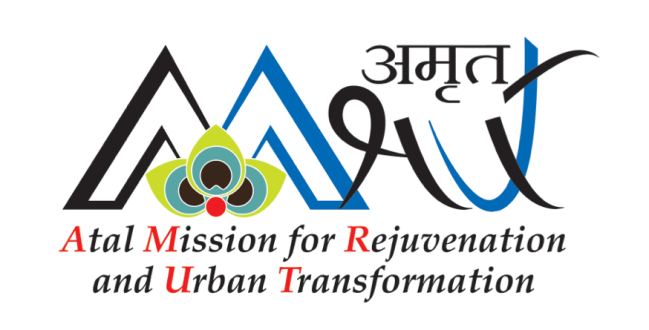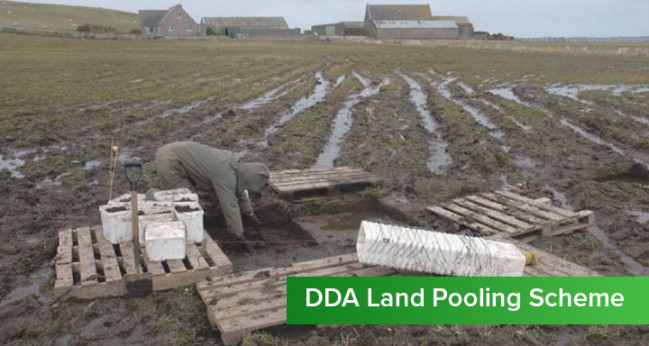Indian Real Estate 2019 Round Off
Real Estate is one of the key driving factors behind the growth of the Indian Economy and plays a pivotal role in the nation’s GDP growth. It is among the most recognized sectors globally. It creates millions of direct and indirect employment opportunities and supports the country’s development. It consists of 4 sub-sectors – Housing, Commercial, Retail, and Hospitality. The growth of this sector is well complemented by the growth of the corporate sector and the demand for office space as well as urban and semi-urban houses. The real estate sector of India ranks 3rd among the 14 major sectors that have a direct and indirect impact on all sectors of the economy.
The year 2019 has been a period of ups and downs for the Indian Real Estate Sector. There have been various policy and taxation related announcements in the last year. The market experienced the impact of the ongoing Non-Banking Financial Company (NBFC) crisis which resulted in a liquidity crisis and a slow pace of recovery in sales. On the other hand, the successful launch of India’s first Real Estate Investment Trust (REIT) opened new avenues for investments in real estate while multiple government SOPs provided much relief to the housing sector.
Post the policy reforms of 2017 such as demonetization, RERA, and GST, the residential market is absorbing the impact of these changes and is on the path to recovery. India continues to retain its position as the world’s fastest major growing economy on the back of improved investor confidence and better policy reforms.
The growth of the Indian Real Estate Market in 2019 has been driven by numerous factors including technology, improved ease of doing business, dust settling post the implementation of reforms such as GST and RERA, and demand-supply dynamics, among others.
It is also expected that the real estate sector will incur more and more NRI Investments in both the short and long term.
In the year 2019, the realty sector has experienced its highs and lows. Affordable Housing performed beyond expectations within the residential segment, while the luxury apartments continued to witness subdued sales. On the other hand, the commercial segment saw most of the investment flowing in as the year comes to an end. Whereas, other asset classes such as warehousing, Coworking, and Co-living gained momentum.
Initiatives are taken By The Government
If we look back at 2019, we can not deny that the government did not make sincere efforts to strengthen the sector. A series of reforms and policy changes were adopted. Some of them are:
- Reducing GST rates to 1% for affordable homes and 5% for under-construction flats/apartments
- The announcements about NHB raising liquidity to the housing finance companies
- Relaxation of External Commercial Borrowing (ECB) funds
- Creation of Alternative Investment Fund of Rs 25,000 crore for Stalled Housing Projects
- Successive Repo Rate cut coming to 9-years low (total 135 basis points in 2019)
- Tax holiday to first time home buyers
- Relaxation in FDI norms for a single brand retail
- The government slashed the corporate tax rate to 25.17% from 30% for existing companies, and to 15% from 25% for new manufacturing companies.
- In 2019, consolidation continued in the residential segment. Those developers who are either on the verge of insolvency or have their project stalled continued to re-enter the market through joint development, or mergers.
- Technological advancement in real estate too increased in the last year.
Post-2017 reforms such as Real Estate (Development & Regulation) Act (RERA), the inventory pile-up kept increasing across markets. New launches had taken a hit. Increasing unsold inventory became a cause of concern as liquidity challenges coupled with RERA deadlines made it tougher to deliver the project. In spite of the odds, those with deep pockets or leading names in the realty sector continued to outperform in 2019.
Since the start of this calendar year, there is a decrease in unsold inventory, which is a positive sign for the industry’s revival. In 2020, this is likely to reduce further to healthy levels. Another crucial factor for improved sales was largely stagnant property prices. Going forward, we may witness investors, funds, and lenders showing confidence to finance future projects. If employment levels improve and inflation kept under check, the revival of the sector isn’t distant. The year 2020 may well be the turnaround year.
Market Size
The real estate sector in India is expected to reach a market size of US$ 1 trillion by 2030 from US$ 120 billion in 2017 and contribute 13% of the country’s GDP by 2025. Retail, hospitality and commercial real estate are also growing significantly, providing the much-needed infrastructure for India’s growing needs.
Housing Sector
As per the CBRE report, it is expected that out of the 2.3 lakh new unit launches in 2019 in the top 7 cities, nearly 40% or approximately 92,000 units were in the affordable segment, followed by mid-segment with a 33% share. The luxury and ultra-luxury segments amounted to the least share with 10% (approximately 23,000 new units). Apart from that, Center Approves 3.31 Lakh More Houses Under PMAY(U) to fulfill the housing needs of the Urban poorer.
- Housing sales in 2019 saw a modest 4-5% annual growth with over 2.58 lakh homes sold during the year.
- New housing launches in 2019 saw an 18-20% annual growth with over 2.3 lakh units.
Commercial Sector
As per the CBRE report, office leasing increased by more than 30% annually to cross 47 million sq.ft. during the first three quarters of 2019, exceeding its previous high of 2018. The leasing exercise reached about 15.4 million sq.ft. during Q3 2019, rising by nearly 23% on an annual basis.
Commercial office space continued to be the most sought-after asset class.
Forecast
Since the start of the year 2020, there is a drop in unsold inventory, which is a positive sign for the industry’s recovery. And it will probably see a growing trend in 2020. We expect the hurdles in the real estate sector to get resolved. Stagnant property prices was another factor for improved sales. Going ahead, we may clearly see investors, funds, and lending houses showing confidence to finance future projects. If employment levels improve and inflation remained under control, the recovery of the sector is not very far.


